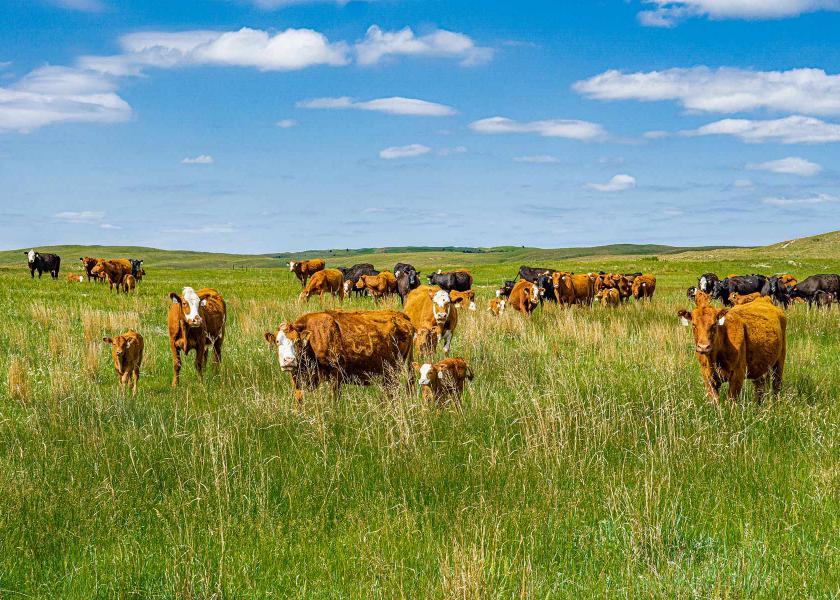Speer: Cowlandia and the Tethered Bull

Given the significance of international trade to the beef industry, and some of the feedback following my Cowlandia column, it’s important to explore the topic in more detail. We’ll start with the broader economic framework in this column and drill down into specifics in subsequent column(s).
Borders and economics: First, let’s start with borders themselves. There’s seemingly a pervasive misnomer they’re intrinsically linked to economic activity. However, economist Don Boudreaux cogently reminds us that political borders do not imply economic relevance: “People are easily misled by the existence of political borders into imagining the existence of economic relevance that simply isn’t there. Any such supposed economic relevance is a delusion.”
Note, none of that should be perceived as suggesting border security isn’t important. The point being borders represent sovereign – but not necessarily economic – divisions.
Then there’s the very essence of the Cowlandia discussion. Henry George (Protection or Free Trade, c. 1886) addresses the topic from an applied, principled manner:
Consider…protective theory [versus] free trade that prevails between the states of the American Union...does not New Jersey need the protection of a tariff from New York and Pennsylvania? …Clearly, if there is any truth in the protective theory it must apply not only to the grand political divisions but to all their parts. If a country ought not to import from other countries anything which its own people can produce, the same principles must apply to every subdivision; and each state, each county and each township, must need its own protective tariff.
Imports and economics: Second, what about the economic fallout of protectionism? The burden always gets passed to the consumer. That’s best illustrated by the sugar industry. The American Enterprise Institute estimates sugar protectionism provides roughly $1B in benefits - to a relatively limited number of producers - but cost consumers upwards of $5B annually.
Meanwhile, protectionists also conveniently overlook the qualitative benefits of imports. International trade enables access to a whole host of goods that would be unavailable otherwise. Imagine your daily life in the absence of bananas or scotch or flat-screen TVs or Power Stroke engines or coffee. (It’s hard to conceive rural America without the local coffee shop.)
Last, let’s not miss the foundational nature of raw material imports to the nation’s economy. That’s especially significant for beef producers; they’re both direct and indirect beneficiaries of fertilizer imports. The absence of such would prove devastating for U.S. agriculture with huge implications for the beef industry as we know it.
Two-way Street: As noted in Mad About Trade, international exchange is “…a two-way street; there’s no having your cake and eating it too (all exports and no imports). What’s more, when it comes to trade, no industry operates independently. The one-way street isn’t a viable option; impeding imports of one product can result in broad, indiscriminate retaliation across other sectors of the economy (thereby turning allies into rivals).”
That’s especially pertinent to agriculture. As soon as tariffs might be introduced on beef products imported from other countries, trade retaliation likely spreads to other products. Last year’s agricultural exports totaled $196B (see table below).
Conservatively, if we set the economic multiplier at two-to-one, agricultural trade represents nearly a $400+ B business. To that end, U.S. ag exports support roughly 1.15M jobs on and off the farm.
Tethered Bull: In the end, protectionism is the equivalent of rent seeking – special interest invoking governmental privileges. Trade sanctions are an attempt to deflect having to compete in world markets.
But rent seeking always proves to be a self-defeating endeavor. Cowlandia observed that: “…import restrictions closed Cowlandia’s cattle economy – and choked off the nation’s producers (and cattle infrastructure) from the plethora of opportunities previously available to them.”
No one describes that reality better than George; he opens his book with the following observation:
Near the window by which I write, a great bull is tethered by a ring in his nose. Grazing round and round he has wound his rope about the stake until now he stands a close prisoner, tantalized by rich grass he cannot reach.
Nevil Speer is an independent consultant based in Bowling Green, KY. The views and opinions expressed herein do not reflect, nor are associated with in any manner, any client or business relationship. He can be reached at nevil.speer@turkeytrack.biz.








